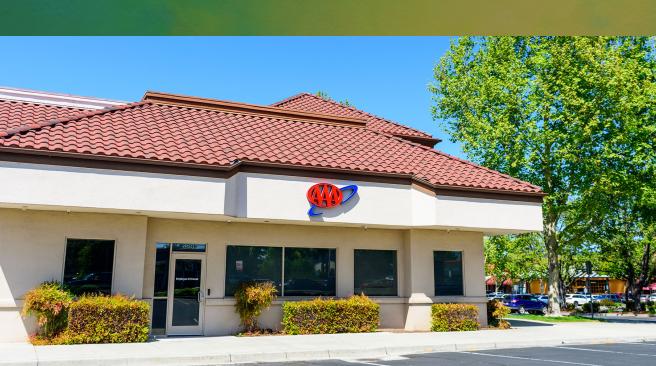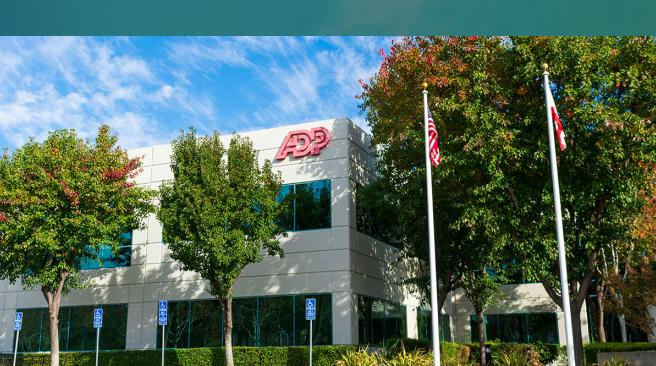
Featured on CIO.com | By Howard Tiersky
Success Secrets for Conversational Commerce
From the CEO and CIO of 1-800-Flowers.com
When Facebook Messenger announced the opening of its chatbot platform a little over a year ago, one of the first companies to leap into serving customers via automated chat was 1-800-Flowers.com. Mark Zuckerberg, Facebook CEO, demoed their beta platform as part of his announcement, joking “To order from 1-800-Flowers, you never have to call 1-800-Flowers again.”
Since then, Facebook has continued to expand the platform’s capabilities, adding payment methods and enhanced UI capabilities. As a result, more than 34,000 businesses have launched chatbots on the platform, with more on the way.
Given that so many companies are newbies in this arena, we thought it would be interesting to check in with Chris McCann and Arnie Leap, 1-800-Flowers.com, Inc. CEO & President and CIO, respectively, to see what wisdom they have gained, given that their company is one of the most seasoned veterans of the first year of this emerging platform.
McCann sees his company’s involvement in bots as a natural evolution in a history of innovation. “Change is usually driven by technology, which drives change in consumer behavior,” McCann explained, referring both to the current state of the company as well as to its early days when growth was driven by a technology shift of an earlier generation.
The company’s origins were in running a chain of local brick-and-mortar florist shops. McCann recalled, “Early on I noticed that some of our stores started to do more business over the telephone than they were doing via customers walking through the front door. When we analyzed our retail store profitability I realized I didn’t need all those retail flower shops; we just needed a call center because people got used to interacting with the business by calling on the telephone. We embraced telephonic commerce, got the telephone number 1-800-Flowers.” This turned the company into an industry disruptor nearly overnight.
But just as they were enjoying their telephonic success, the world of online services began to emerge. Whereas this trend could have been a threat to their business model, 1-800-Flowers saw it as an opportunity. McCann remembered, “We saw online services emerging back in the early 1990’s and didn't know what that would amount to, but said, ‘Well, we disrupted the industry by embracing 800 services... somebody else could disrupt us by beating us in this online world.’ We felt we had no choice but to jump in early and learn early.” 1-800-Flowers.com launched a store on CompuServe in 1991 and was the first merchant to sell any product of any kind on AOL. 1-800-Flowers.com launched our first website in 1995. ”Our philosophy has always been to get involved early, kind of engage early, learn, adapt and then commercialize,” according to McCann.
If e-commerce was the company’s second wave of change, a decade later, the third wave began to build. 1-800-Flowers.com started investing in its mobile strategy in 2006. McCann says he remembers when the recession started hitting the company hard, and like all companies, they had to cut back costs everywhere they could. According to McCann, “Some people suggested to me that we cut back on our investment in mobile. I said, “If we did that in that area of e-commerce back in 1994, when things were tough, where would we be today?” McCann added, “In fact, today we’re really a mobile-driven company. The third wave that we're still riding today is mobile with the combination of social.”
It was with that history and perspective on technology change that 1-800-Flowers.com approached the potential new wave of Conversational Commerce. McCann recounted, “Back about 12-16 months ago, the management team here had been circulating a bunch of articles on the emergence of robots. Robot doesn’t just mean a physical robot; it’s a bot, it's software, it’s automation of any kind - machine learning capabilities, etc.”
In April 2016, McCann and his CIO, Arnie Leap, launched their first bot on Facebook Messenger as part of a multi-prong conversational commerce strategy. Additionally, as McCann recounted,“Two weeks later we launched on the Amazon Alexa platform, and two weeks after that we launched GWYN, our artificial intelligence (AI) gift concierge that we built on top of IBM's Watson platform.
With this history and more than a year of experience under their belt, I asked McCann and Leap what they have learned, and I then synthesized our interesting discussion into seven key findings:
1. Customers Prefer Chatting with Bots Over Humans
One of McCann’s most surprising discoveries is that people like interacting with bots more than humans, especially on the order entry side. McCann explained, “If the experience is good and is more at their pace; they feel more in control, and they’re getting consistency.” McCann added, “If you were to call a customer service department or sales line of any company, you’re not necessarily getting one company experience. You’re getting whatever the experience is delivered by any of those 400, 500 or 1000 people. It changes slightly by person. The best company in the world is going to have a little bit of difference person by person. Consumers like consistency in knowing what they’re going to get.”
While McCann indicated that this finding was especially true for order entry, customers seem more hesitant to access the bot for customer service or order status type questions, though he indicated that may be simply a symptom of the system not being as comprehensive in that area. In fact, it’s typically more challenging to provide customer service via AI as there are a larger number of use cases than in straightforward ordering.
2. Customers Talk to Bots Like They Are Humans
Interestingly, even though customers are aware they are chatting with a bot, they tend to interact as though they’re speaking with a human. Leap described, “When GWYN says ‘Hi,’ people say hello back. People really engage in that conversational manner.”
3. Make It Crystal Clear When You’re Talking To A Bot
McCann described the importance of making sure people understand when they're speaking to a bot vs. speaking to a human as an early learning. “There are certain interactions where humans jump in to help out if necessary, which really confused people. We needed to make sure we had a clear delineation for users in the bot that they are going to be 100% interacting with a bot. They want to know that.“
4. Alexa Has Challenges But Creates Opportunities
McCann described how on the Alexa platform, it has been a little bit of a slower learning process. ”In order to really utilize the capabilities, customers need an account with us, which is a hurdle.” However, what 1-800-Flowers learned was that a lot of the customers who wanted to engage with them on Alexa were new customers, which drove a lot of new account registrations.
According to McCann, “We always struggle, even on the desktop version, with getting people to log in and register. I think in the areas of voice computing, people more readily understand all of the benefits that would be available to them if they identify themselves. We can then use the data that we have on them to make the transaction more frictionless and just much easier and much more enjoyable.”
5. The Biggest Difference Between Voice and Text Chat Is The Absence of The Visual
When asked how differently 1-800-Flowers.com needed to build conversational commerce on typing-based chat platforms, such as Facebook Messenger vs. voice-based platforms, such as Alexa, McCann and Leap indicated that it was very similar. They were able to re-use mostly the same flows and dialog. The primary difference was that with a typed application, you can present visual information to the user such as product images. With voice, you can’t assume the user is looking at the screen (even if there is a screen such as with SIRI or the new Echo Show), so you have to rely more on words, a challenge when merchandising highly visual products like floral arrangements.
6. Don’t Get Caught Up In The Hype… One Way Or Another
While McCann believes consumers are definitely embracing this technology, he admits that it’s not going to happen overnight. Therefore it’s best not to get caught up in the cycle of hype and disillusionment. “Last spring when we announced all these products, we as well as others, we received lots of press. As we moved through the fall and into the spring of the following year, you started seeing some articles written: ‘Okay what’s it all really amounted to? Nothing has really amounted to anything here. Is this all just hype?’ I think that is your normal curve of new technology.” According to McCann, these advancements have moved into the commercialization phase, especially in light of the bots recently announced at Google IO.“I think the most important thing is what we have learned? Consumers want something. What we like about it, as well as what the consumers want, is that you will have the consistent experience in the business and can have that experience at scale. I think that’s a great opportunity.”
7. Skunkworks Can Help
When McCann and Leap started down the path of launching a trio of chat tools in short order, they recognized that there was a risk that their enterprise might not be prepared to move at such a rapid pace, so McCann separated the effort off into a kind of skunkworks effort. McCann and Leap realized that the risk of stagnation existed had they added these project as just another in a list of initiatives. “What we did is we took a team of myself, Arnie [Leap], and about three other people in the company and said we're not going to tell everyone else what we’re doing, we’re not going to get everyone excited until this thing is launched. We just said we’re doing it, that’s it, here’s a small team and you’re running outside the normal parameters. Here’s the funding - let's go get it.”
So, what have been the results?
While McCann and Leap were not ready to share the full metrics around their first year in conversational commerce, they were willing to share some interesting data points:
- A survey of customers indicated that over 80 percent of them would use GWYN again.
- In general, customers are spending about two minutes interacting with GWYN and then leave GWYN to complete the transaction. One of the changes plan on making is to enable transaction completion within the chatbot.
- They are happy with the conversion rates associated with chatbot users, and users who use the chatbot have slightly lower checkout abandonment rates. Leap believes that’s because customers spent more time choosing the right product.
- Chatbot users spend slightly more time on the site overall. McCann and Leap attribute that to the chatbot’s success at cross-selling other products across the 1-800-Flowers.com family of brands.
What’s next?
I asked McCann and Leap for some predictions for where they think this technology will go next at 1-800-Flowers.com:
Impact on Call Center
Industry opinions are mixed regarding whether chatbots will increase or decrease the demand for live customer service chat. On the one hand, the technology has the potential to replace many routine customer service chat interactions. On the other hand, most commerce chatbots, including 1-800-Flowers.com’s, “handoff” to a live representative if the request is beyond the bot’s ability to comprehend or take action. If chatbots drive more customers into a chat experience, those handoffs could wind up increasing the total volume of sessions handled by live representatives.
When asked to predict which way it will go at his company, McCann claimed that the natural assumption would be that as the chatbot becomes “smarter” the less need there will be for some human interaction. However, history can be a guide. “I remember when we started embracing interactive voice response (IVR) a little bit deeper, some consultants we were using at the time claimed that they could cut down on our call center contacts by giving customers more information [via IVR],” McCann recalls. “However, that was counterintuitive, in that the more information you give consumers, the more they contact you. The same dynamic seems to be playing out in the use of online chat.” As a result, the company is not necessarily focusing on chat as a matter of efficiency, but rather as a tool designed to enhance the customer experience.”
Separate vs Integrated Bot Engines
When 1-800-Flowers.com developed its first wave of chatbots (three in total), each was developed as a separate, unique platform. When asked whether he believed these would remain separate or converge at some point, Leap responded: “Each of the technologies were slightly different a year or 18 months ago, so we wanted to stay well within the guidelines of what each technology stream could provide focusing on short-term success, while also iterating and learning.” Leap stated that the current iteration of the bots does not feature AI learning, however, in time he thinks they'll all be powered by GWYN and that she will have the ability to maintain context across all end devices.”
Automotive as the Next Frontier
Thinking a bit outside the box, McCann and Leap agreed that the next frontier in voice computing is the automobile. Customers can interact with us while they’re driving and using text-by-voice at the same time, right? So, we’ll be looking to push the envelope there.
“We’re seeing a huge difference in the automobile industry in the last 24 months as it relates to the technology in the car, so that could lend itself to having a personality, such as GWYN being able to support whatever gifting needs are required in an automobile. That’s a small market, but that’s just an example of another edge interface that could become available vs. the traditional one's today, which are mobile devices, tablets, desktops and other applications that exist. So we think more in terms of voice commands, but it's early yet, and we’re kind of excited with some of the prospects we’re seeing in the marketplace.”
Personality
Looking to the future, McCann and Leap acknowledge that in the urgency to get their bot platform built, the first release wasn't focused on her personality. As McCann described, “One of the things we’re beginning to learn is that we probably do need to start to think about the personality of GWYN, and in the future, figuring out if we want to have more than one personality interacting with our consumers.”
He added, “It’s interesting, we’ve had several people internally talk about how we make GWYN really represent the culture of our company — the passion everybody has for delivering smiles and what that really means.” For 1-800-Flowers.com, the challenge lays in how to personalize the bot to the extent that it exemplifies the special relationship the company has with its customers — a relationship based on trust. They put their trust in us to deliver an emotion for them, or as we like to say, we’re delivering a smile because every time they send a product to somebody, it’s for a birthday, an anniversary or a funeral; each is a different kind of smile. People say GWYN really needs to represent that culture. We’re just really starting to think about that.”
Continuous Innovation
In closing, Leap described their commitment to continue to innovate. “Over the last year, the progress that we delivered to date in this area has certainly reinforced our hunger to keep going. We’re seeing things slightly different than the rest of the world, and that’s a competitive edge for us. We’re going to keep fueling the beast.”











